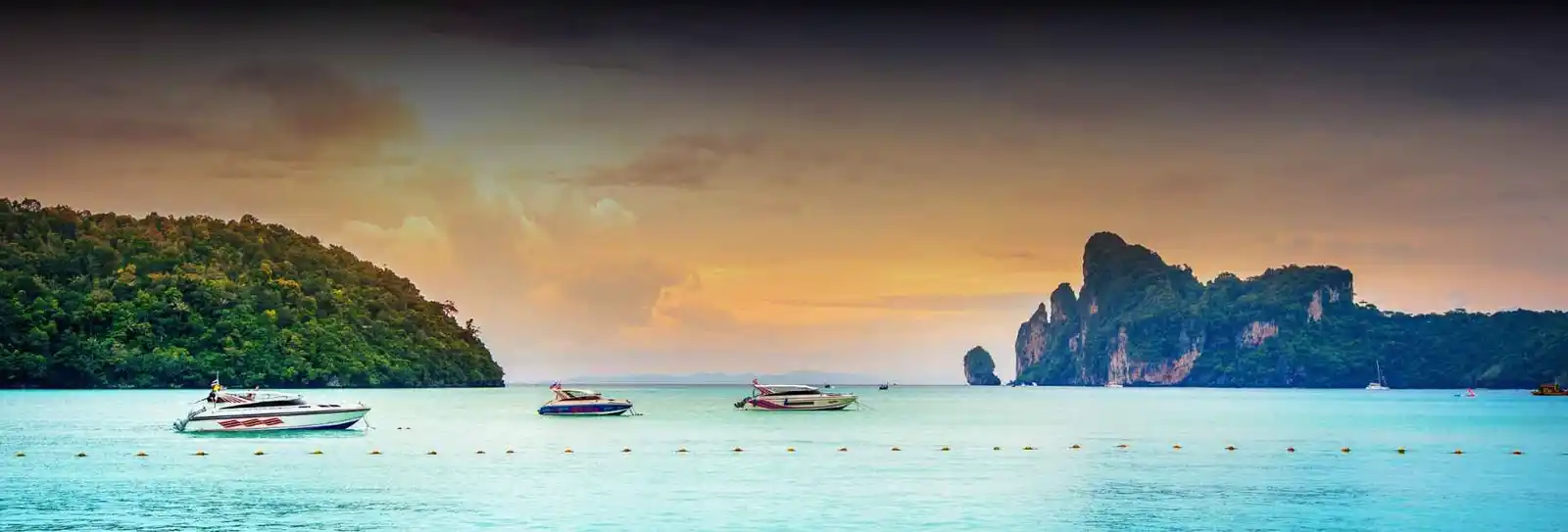
Maharashtra is located in the west of India and is a cosmopolitan, multicultural state with varied geography, heritage, history, and tradition. It is the state capital of Mumbai and the abode of more than 100 million people, which makes it the second most populous city in the Indian state. The state is the most interesting in the combination of nature's charm and the world of cities, from the populated urban areas and modernisation to serene beaches, green forests, and tiny hill stations. Maharashtra is famous for the ancient forts, ancient caves, and shrines like the Ajanta and Ellora caves, and colourful festivals like Ganesh Chaturthi. The state's economy is India's most robust, and industry, agriculture, and services are the main inputs, based mainly on entertainment, finance, and IT. From misty Western Ghats hills to untold Arabian Sea beaches, Maharashtra has plenty in the tourism sector, with a multitude of activities. Adventure lover, history buff, or nature lover, Maharashtra provides mixed experiences across locations.History of MaharashtraMaharashtra is filled with history as varied as the state itself. Maharashtra has witnessed the rise and fall of many dynasties, each contributing its touch to its political, cultural, and architectural heritage. In ancient times, Maharashtra was occupied by the Maurya Empire and Satavahana dynasty, who had been ruling from approximately 230 BCE to 220 CE. The Satavahanas themselves were already renowned for building the state's commerce, art, and culture. The state also experienced the occupation of the Vakataka dynasty, who were prone to the advent of Hinduism and Buddhism, as deduced from the world-famous Ajanta and Ellora caves. Medieval periods witnessed the emergence of the mighty Rashtrakuta dynasty (8th-10th centuries) of the Deccan, followed by the 12th-century Yadava dynasty with its capital Devagiri (Daulatabad of contemporary times). Maharashtra was later controlled by the Maratha Empire, which emerged in the 17th century under Chhatrapati Shivaji Maharaj. Shivaji’s guerrilla warfare tactics and establishment of a strong naval presence marked the beginning of a powerful Maratha Empire, which played a significant role in resisting Mughal expansion. During the period of British rule, Maharashtra was conquered by the British, but the Marathas never ceased to attack British rule somehow or other. After India gained independence in 1947, Maharashtra was established as a state when the Bombay state was divided in 1960.10 Tourist Places of Maharashtra1. Ancient Forts of MaharashtraSome of the famous forts of Maharashtra speak volumes about the rich history of the state. All these ancient forts of the Maratha Empire era are attractive in themselves and a glimpse into the past of the location. Shivneri Fort, the birthplace of Chhatrapati Shivaji Maharaj, at Junnar, is the most sought-after of all these. But another significant fort is Raigad Fort, the imperial capital of Shivaji. Trekkers would prefer Lohagad Fort and Torna Fort with risky treks amidst the surroundings, and Sindhudurg Fort is a massive sea fort on the Konkan coast. All these forts, if they are attempted, acquaint you not only with the medieval war strategy but also subject you to an experience to enjoy the heritage of Maharashtra.2. Trekking in the Western GhatsWestern Ghats, a UNESCO World Heritage location, form the western boundary of India's western coast and present ample adventure trekking opportunities within Maharashtra. Whether an experienced old hand or one who is new, the Tadiandamol Trek, Kalsubai Peak, and Harishchandragad Fort all have more than one trail available, varying by difficulty and payback. All these treks combine adventure and nature to the fullest, with forest, lakes, valley and hilltop scenery. Western Ghats are also biologically rich, and hence, it is a great place for nature enthusiasts and wildlife enthusiasts.3. Unwind at Maharashtra BeachesMaharashtra boasts of an extremely long Arabian Sea coastline on which some of India's most scenic beaches are situated. Be it a leisure break or water sports, Maharashtra beaches have something to offer to everyone. Alibaug, sea being calm and the beaches sandy, is ideal for relaxation. Blue water and the well-known Ganapati Temple in Ganapatipule are other picturesque beach locations. Vengurla and Dapoli are ideal locations for water sports like parasailing and jet skiing if one desires to indulge in the same. The coastal regions also provide the opportunity to visit tiny fishing villages and enjoy seafood fresh from the boats.4. Visit Ancient Maharashtra CavesMaharashtra possesses India's most sacred ancient caves, several of which have existed for thousands of years and have been excavated from rocks. Maharashtra's two of the best sightseeing destinations, and UNESCO World Heritage Monuments to add to it, are the Ajanta Caves and Ellora Caves, famous for the best Buddhist sculpture, art, and architecture. Once more, one of the most over-popular haltovers here, off Mumbai, is the Elephanta Caves and rock-hewn ancient Lord Shiva temples. Any person who is remotely interested in history, let alone religion, cannot help but rue the day they did not pay a visit to the caves for an astronomically unprecedented amount of depth in terms of art as well as cultural, religious material.5. See the Temples of MaharashtraMaharashtra is a culturally endowed state, and Hindu deities have plenty of temples, which are scattered all over the state. Trimbakeshwar Temple at Nashik, which is one of the twelve Jyotirlingas of Lord Shiva, attracts thousands of pilgrims every year. Shirdi, another popular pilgrims' destination, is where there is the saintly Sai Baba's temple. Vithoba Temple at Pandharpur is the cult centre of the Warkari sect. Bhimashankar Temple in the Western Ghats is also ringed by serene surroundings that greet pilgrims and nature enthusiasts alike. Such temples and their heritage constitute Maharashtra's religious heritage.6. Visit the Wine LandsMaharashtra has a well-developed wine culture, and Nashik is the destination to see it. Nashik is also popularly known as the "Napa Valley of India," and the region has diversified vineyards and wineries that produce some of India's best wines. There are educational tours, study tours of how the wine is being produced, and tasting some of the wine. The most visited place is the Sula Vineyards because SulaFest is organised here every year, and wine enthusiasts and music enthusiasts visit here to witness the performances and drink local wine. Nashik's natural beauty gives a touch of elegance to the place.7. Taste the Gaiety of Ganesh ChaturthiMaharashtra is especially famous for the elaborate and colourful Ganesh Chaturthi festivities, a festival on the occasion of Lord Ganesha worship. Celebrated traditionally in August or September of a month, the festival is accompanied by elaborate processions and neat-and-clean idols of Lord Ganesha. Street processions, concerts, and draped Ganesha idols being accommodated in houses and public places are especially characteristic of Mumbai. The pleasure is enhanced to the best by the sea submergence of the idols that renders it a lively and engaging experience. A trip to this festival is one of the best means through which one would be able to experience the tradition and culture of Maharashtra.8. Visit the Wildlife SanctuariesThere are certain wildlife sanctuaries in Maharashtra where an individual gets a chance to experience its richness in flora and fauna. Tadoba Andhari Tiger Reserve, located in the Vidarbha region, is one of the best places where one can spot tigers in their natural habitat. Sanjay Gandhi National Park, located near Mumbai, contains leopards and wildlife and is a place where safaris and nature walks can be arranged. Melghat Tiger Reserve and Bhamragad Wildlife Sanctuary are among the prominent tiger reserves, where leopards and other bird species are found. Wildlife lovers and photography enthusiasts have exclusive opportunities for wildlife spotting and photography in the sanctuaries.9. Explore Maharashtra Hill StationsMaharashtra hill stations are ideal escapes from the concrete jungle. Western Ghats hill stations are hilly, densely forested, and windy in climate. Strawberry plantations, viewpoints, and ancient temples highlight Mahabaleshwar a highlight. Matheran, a motorcar-free hill station, has a serene atmosphere and such attractions as the very popular Panorama Point and Echo Point. Lonavala and Khandala near Mumbai are famous for greens, waterfalls, and landscape, and are therefore ideal weekend getaways.10. Try Local FoodMarathi food is as diverse as its culture. From seafood in coastal villages to hot vegetables, the state is devoid of that which will make your taste buds tingle. Pav Bhaji, Vada Pav, and Poha are a few of the street foods, and Misal Pav is a hot, spicy one. Bombay Duck and lots of seafood take their place by the sea. Bhakri, Sol Kadhi, and Puran Poli are enjoyed as sheer Maharashtrian food in villages. For tasting the original one, have a Maharashtrian thali providing an assortment of cuisine as per the prosperous food culture of the state.Why Book with escape2exploreWhen exploring Treks in Maharashtra and beyond, escape2explore stands out as a trusted name in adventure and experiential travel. Here’s why hundreds of travellers choose us for their getaways:Trusted, Well-Reviewed Local Operator: escape2explore has gained the trust of thousands of content tourists all over India. With persistent positive feedback and an unblemished reputation for delivering quality experiences, we assure you that your experience will be hassle-free, memorable, and value-packed. Our insider local knowledge guarantees that you will always be in safe hands.Seasoned Guides: Our trips are led by friendly, trained, and professional guides who are passionate about the outdoors and your safety. Whether it's a beach trek, a cultural tour, or a spiritual walk through temples, our team knows the terrain, the stories, and how to make each moment count.Safe & Curated Itineraries: Your safety is our number one priority. Our tour packages are thoughtfully crafted with safety measures, researched accommodations, and easy travel arrangements. We take care of the details so you can have the experience hassle-free and worry-free.Unique Experience That You Won't Find Anywhere Else: With escape2explore, you discover more than the tourist attractions. We go off the beaten track with hidden beaches, unusual treks, offbeat cultural destinations, and true interactions.Read: Kedarkamnth|Kalsubai|Trekking Destination Near Delhi|Rakmachi Fort|Torna Fort


